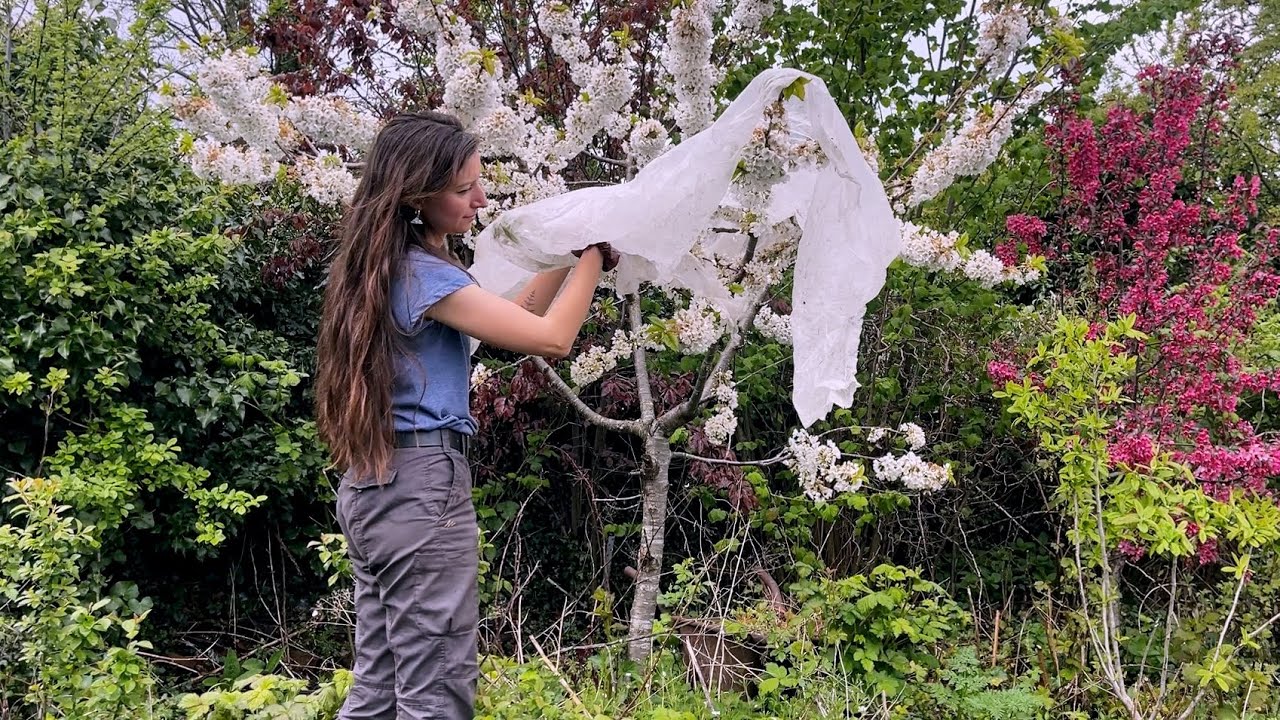How To Protect Plants From A Late Spring Frost
Unleash Your Creative Genius with MuseMind: Your AI-Powered Content Creation Copilot. Try now! 🚀
Prioritize Your Plants
When facing a late spring frost, it's crucial to prioritize which plants to protect. Your most valuable and tender plants, such as young seedlings and delicate vegetables like tomatoes and squash, should be the top priority. These young plants can be severely damaged or even killed by temperatures below zero. If you have limited space indoors, consider a creative solution like using your car as a temporary shelter. Just make sure to keep it warm and well-lit during the day and bring them back to the plot when the temperatures are safer.
Fleece is Your Friend
If you have a large number of plants that can't be brought indoors, your best friend is horticultural fleece. This lightweight fabric can help raise the temperature around your young plants by about a degree, offering protection from frost. Group your seedlings together and drape the fleece over them, making sure it doesn't touch the leaves. Use sticks or other supports to raise the fleece and create a cozy and consistent environment underneath. If you don't have horticultural fleece on hand, get creative and use old bed sheets or pillowcases to improvise.
Don't forget about your potato plants! If their foliage has started to emerge, it's essential to get them covered too. While they can tolerate a light frost, a deep freeze can cause significant damage.
Protect Your Blossoming Trees
If you have fruit trees in blossom, like apple, cherry, or pear trees, they are particularly vulnerable to late spring frosts. Fully open blossoms are at risk of freezing, resulting in little to no fruit for the season. If you value a particular fruit tree, it's worth the effort to protect it. Once again, horticultural fleece comes to the rescue. Drape it over the tree, ensuring all the blossoms are covered. While this may require some work, it can save your future harvest.
Raise Your Plants
Warm air rises, so raising your plants from the ground can help protect them from the coldest temperatures. If you have seed trays or pots on the floor, even a small elevation of six inches to a foot can make a difference. Consider using upturned pots or other materials to lift your plants higher off the ground. By doing so, you'll keep the roots and the plants themselves away from the chilliest air.
Create Heat in Your Greenhouse or Polytunnel
If you have a greenhouse or polytunnel, creating additional heat can help mitigate the effects of a late spring frost. While heaters fueled by electricity or paraffin can provide warmth, they may not be the most environmentally friendly option. An alternative method is the candle technique. Gather two bricks, two terracotta pots (one larger than the other), a coin, and some candles. Place the bricks opposite each other, with the candles in the middle. Cover the candles with the smaller terracotta pot, and place the coin on top of it. Finally, position the larger terracotta pot over the smaller one, creating a little radiator. The candles will release heat slowly, helping to keep the temperature above freezing.
If that method isn't possible, you can still increase the heat by placing buckets or cans of water inside your greenhouse or polytunnel. Water absorbs and retains heat, helping to keep the air temperature higher. Every little bit of warmth counts when facing a late spring frost.
Don't Water Your Plants
Contrary to what you might think, watering your plants during a cold snap can do more harm than good. Wet plants are more susceptible to damage from freezing temperatures. Rather than insulating them, watering can make them colder. Therefore, it's best to keep your plants dry during cold spells. Hold off on watering until the temperatures stabilize and the risk of frost has passed.
Prepare and Expect the Unexpected
As gardeners, we are at the mercy of Mother Nature's whims. Late spring frosts can throw a wrench into our gardening plans. However, by being prepared and taking the necessary measures to protect our plants, we can increase our chances of success. Research your local area's frost dates to get an idea of when the risk of frost is expected to pass.
In the end, the weather is beyond our control. We can only ensure that we do our best with the resources we have. So, take care, stay vigilant, and give your plants the best shot at surviving a late spring frost. Good luck, and may your plants thrive despite the challenges nature throws your way!
